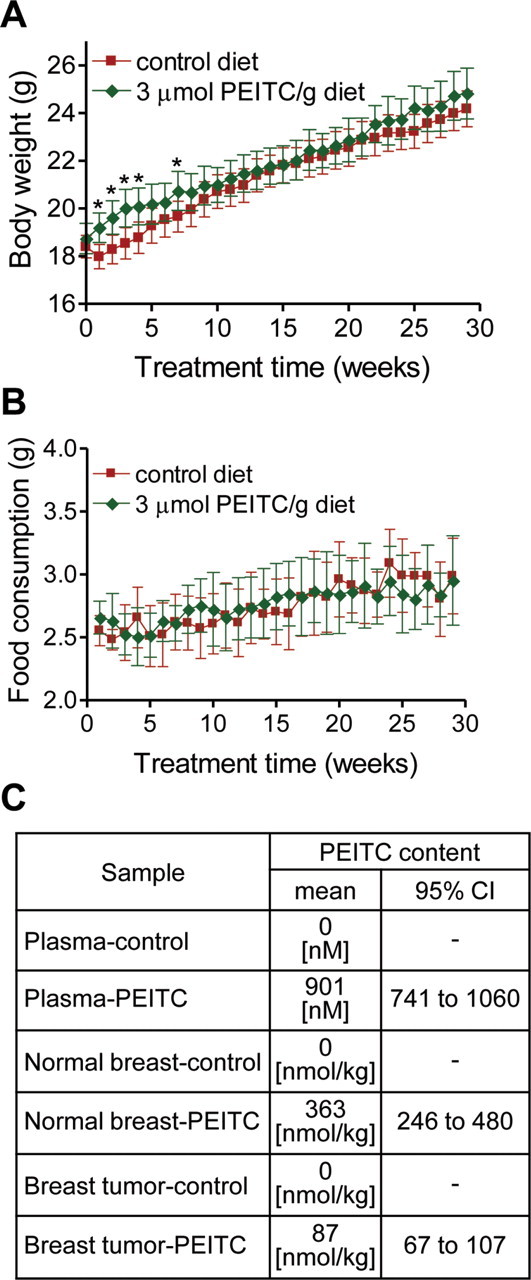Figure 1.

Body weights and food consumptions in mouse mammary tumor virus (MMTV)–neu mice. Female mice that were 6–7 weeks of age were placed on an AIN-76A diet with or without 3 µmol/g phenethyl isothiocyanate (PEITC). A) Body weights over time of MMTV-neu mice that were placed on the control diet or the PEITC-supplemented diet. Mean body weights and their 95% confidence intervals (error bars) are shown (for mice on the control diet, n = 35; for mice on the PEITC-supplemented diet, n = 33 at weeks 1–17 and n = 32 at weeks 18–29 [because one mouse placed on the PEITC-supplemented diet died]). Asterisks denote statistically significant differences (P < .05) compared with the control diet by two-sided Student’s t test. B) Food consumption over time by mice placed on the control diet or the PEITC-supplemented diet. Mean food consumptions and their 95% confidence intervals (error bars) are shown (for mice on the control diet, n = 35; for mice on the PEITC-supplemented diet, n = 33 at weeks 1–17 and n = 32 at weeks 18–29). C) Levels of PEITC in the plasma (n = 5 for mice on the control diet and n = 4 for mice on the PEITC-supplemented diet) and normal mammary tissue (n = 5 for both groups) or breast tumor (n = 5 for both groups) of mice placed on the control diet or the PEITC-supplemented diet.
